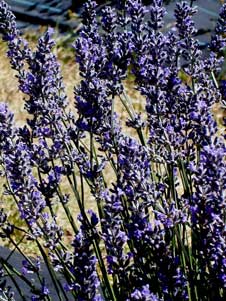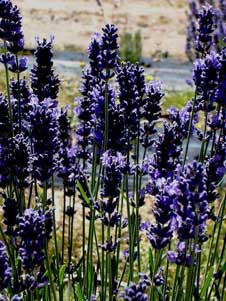

LAVANDULA ANGUSTIFOLIA ‘MAILLETTE’ – FRESH & FLORAL
The famous French cultivar, ‘Maillette’ in full flower, is an elegant open bushy plant up to 75cm round displaying, during summer, abundant lacy purple spikes 8 to 15 cm long.
ESSENTIAL OIL
‘Maillette’ produces essential oil which reflects the effervescent floral refinement general to French lavender oil. This refined character comes from consistently high levels of the defining lavender compounds of linalool (27.23 - 41.17%) and linalyl acetate (33.27 – 41.55%) which while varying each year, nevertheless together consistently account for between 70 and 75% of Maillette’s total oil chemistry. Maillette, as with all our L. angustifolia oil, displays negligible levels of the sharper camphor and 1.8 cineole compounds. The chemical profile matches closely the French and Australian ISO Standard for L. angustifolia oil, and from the GC/MS readings, seen by us, our oil matches closely the phytochemical balance displayed by the European produced Maillette oils
HYDROSOL
The hydrosol derived from the Maillette cultivar adds a light floral front note to the piquant honey aroma typical of most angustifolia cultivar. As with all our lavender hydrosols Maillette comes off the still with a pH level well below 4.5, giving it a high level astringency.


TYPICAL PHYTOCHEMICAL PROFILE RANGE, L.A. MAILLETTE 2005 – 2014
linalool 27.23 – 41.17 • linalyl acetate 33.27 – 41.55• lavandulol trace • lavandulyl acetate 0.18 – 2.22 • limonene/ ß-phellandrene 0.41 – 0.87 • octen -3-ol 0.21 – 0.37• 1,8-cineole trace • cis-ß-ocimene 1.76 – 8.01• trans-ß-ocimene 0.79 – 2.13 • 3-octanone 1.24 - 3.42• octen-3-yl acetate 0.11 – 1.72 • geranyl acetate 0.36 – 0.56 • neryl acetate 0.04 - 0.42• camphor 0.17 – 0.40 •borneol 0.81 – 2.73 • terpinen-4-ol 0.12 – 0.27 • α- terpineol 0.34 – 1.54 • ß – caryophyllene 2.00 – 2.78 • (E)-beta-farsenene 0.37 – 1.55 • α –santalene 1.06 - 1.63

















